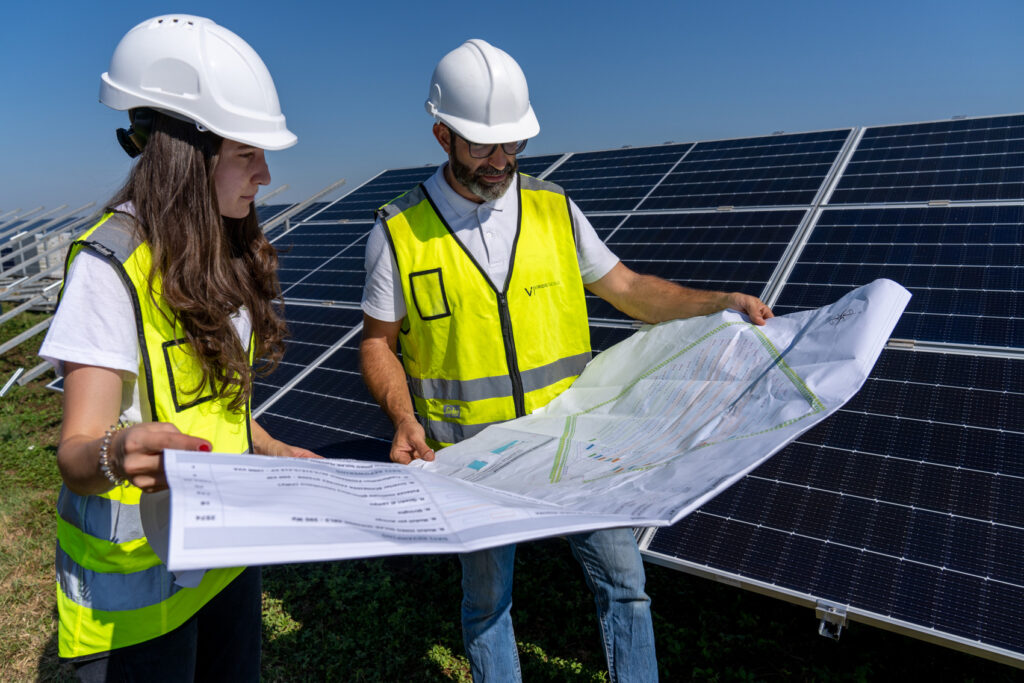Photovoltaic system on agricultural land: eligibility requirements
Installing a photovoltaic system on agricultural land is an excellent investment. In fact, it allows owners to earn more than EUR 2000 per hectare each year. The important thing is to choose the right investor, who is reliable and transparent, and who will take care of the valuation of the land, the installation of the system and the removal of the panels in the event of a contract transfer.
Viridis, in this sense, is a solid company that has been carrying out its mission to produce electricity sustainably since 2010 while offering owners of unused farmland a new opportunity to earn money. Viridis is a key player in the energy transition that will gradually replace fossil fuels with renewable energy.Please do not hesitate to contact us for more information.
Once you have agreed to work with us, you will have to go through several steps before you can start earning money from renting out your farmland. The first step in the process is the evaluation of the land itself. One of our experienced surveyors will visit your property to ensure that it has all the necessary requirements for installing the panels and for maximum performance.
Photovoltaic system on agricultural land: Criteria for land valuation
First of all, the land must be large enough to enable the optimal amount of solar energy to be produced. Usually more than 10 hectares are required, although sometimes even 8 hectares are sufficient. It depends a lot on the investor you get in contact with.
However, there are exceptions: in some regions, which provide for PAS (Procedura Abilitativa Semplificata, in English Simplified Enabling Procedure), such as Lazio, Abruzzo, Molise, Friuli Venezia Giulia and Sicily, land of 3 hectares is also accepted. Another exception to the minimum size rule concerns industrial land, commercial land, former reclaimed landfills and the like. Even in this case, installing a photovoltaic system on a one-hectare plot is possible.
If the terrain is within the required dimensions, one must then move on to assess its degree of exposure to the sun. In fact, there must be no plants or other obstacles between the panels and the sun’s radiation. Another requirement is the slope of the land. In this respect, the experts are rigorous since a flat, non-mountainous surface is required that falls within the numerical slope values identified as optimal for installing a solar panel.
The reason is that panels are often installed with a special movement that follows the sunlight to optimise energy acquisition, a procedure that does not work on slopes that are too steep.
More precisely, we state that the optimal exposure is on flat or slightly hilly terrain facing south, with a maximum slope of 10%.
Examiners also focus on the morphology of the land for photovoltaics. Usually, pasture or arable land is accepted as it has optimal soil characteristics. If there is cultivation on the land, it must be cleared.
The final criterion for choosing a plot of land on which to invest to install a photovoltaic system is its distance from the connection box to the national electricity grid. Indeed, if this is too far away, the investor will have to invest money to build connections, an expense that is too uneconomical.
The connection cabin must not be more than five kilometres away from the chosen terrain. Obviously, it must be calculated that the wider the landscape, the further away the cabin will be from the plant.
To conclude this review of the criteria for evaluating agricultural land for installing photovoltaic panels, we would like to remind you that they must not fall within the constrained areas identified by the PPR. For more information, please do not hesitate to contact Viridis.


